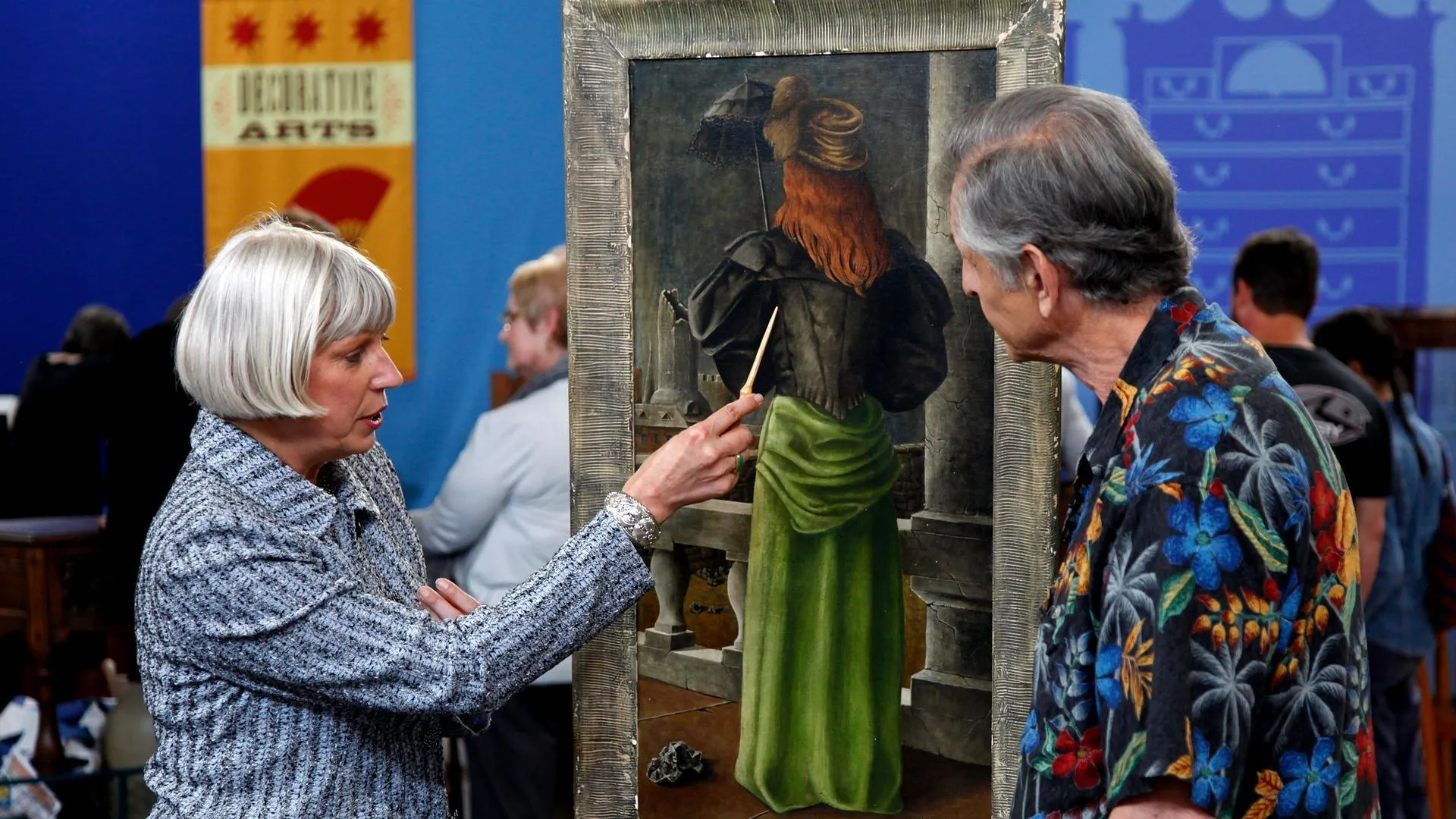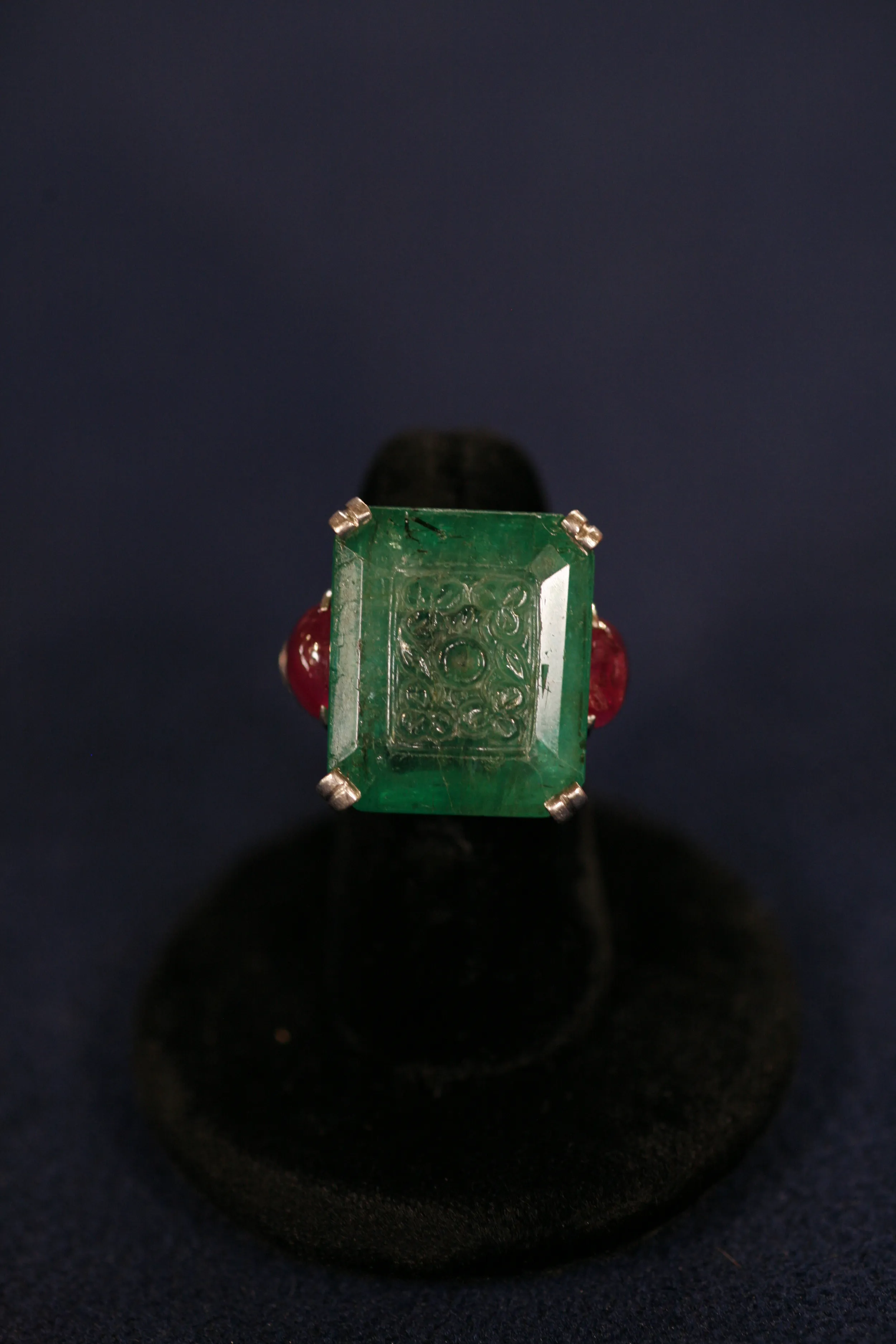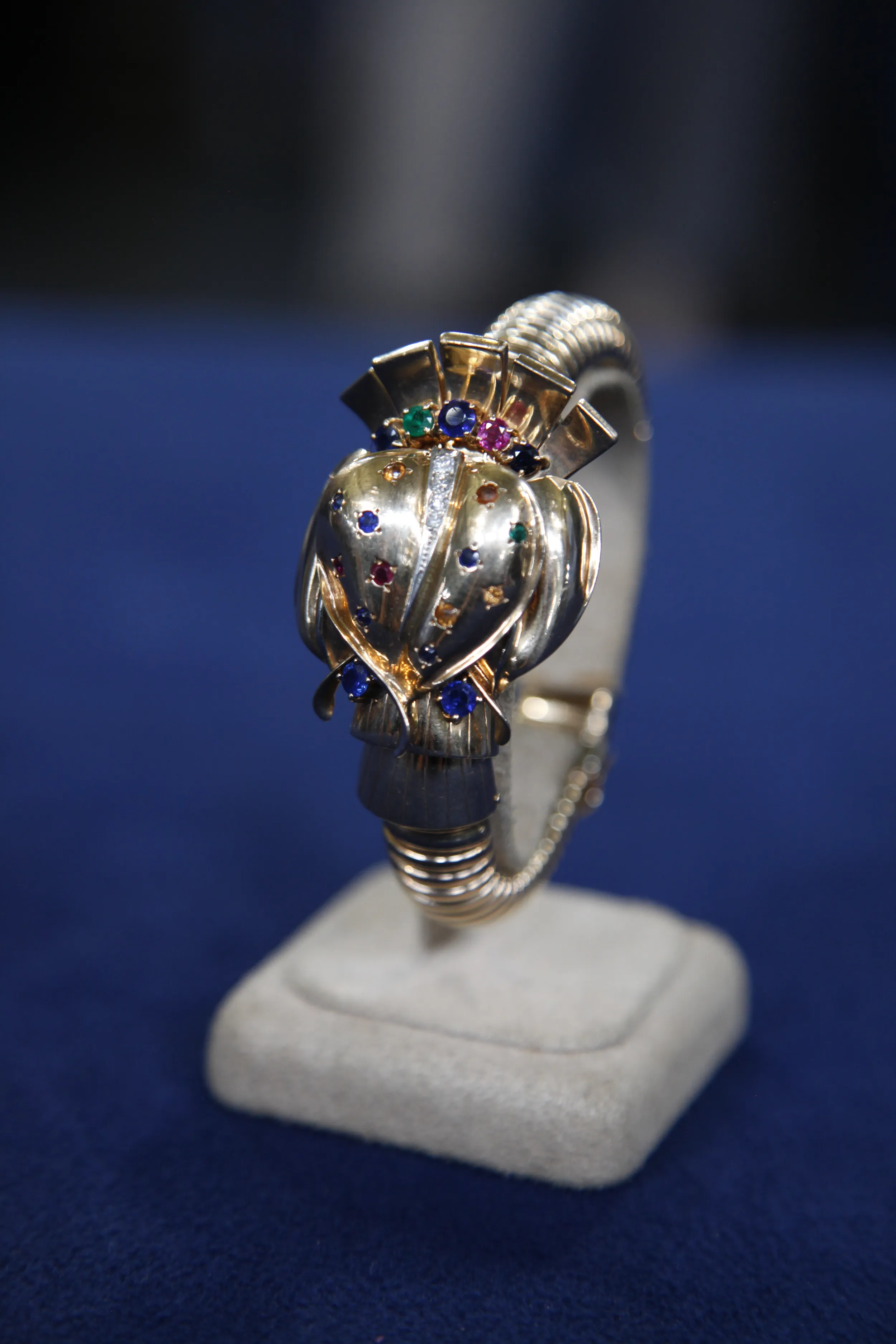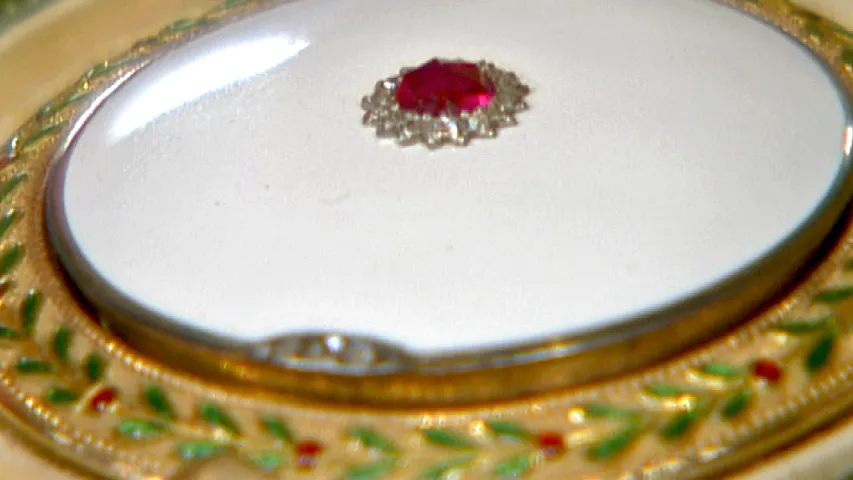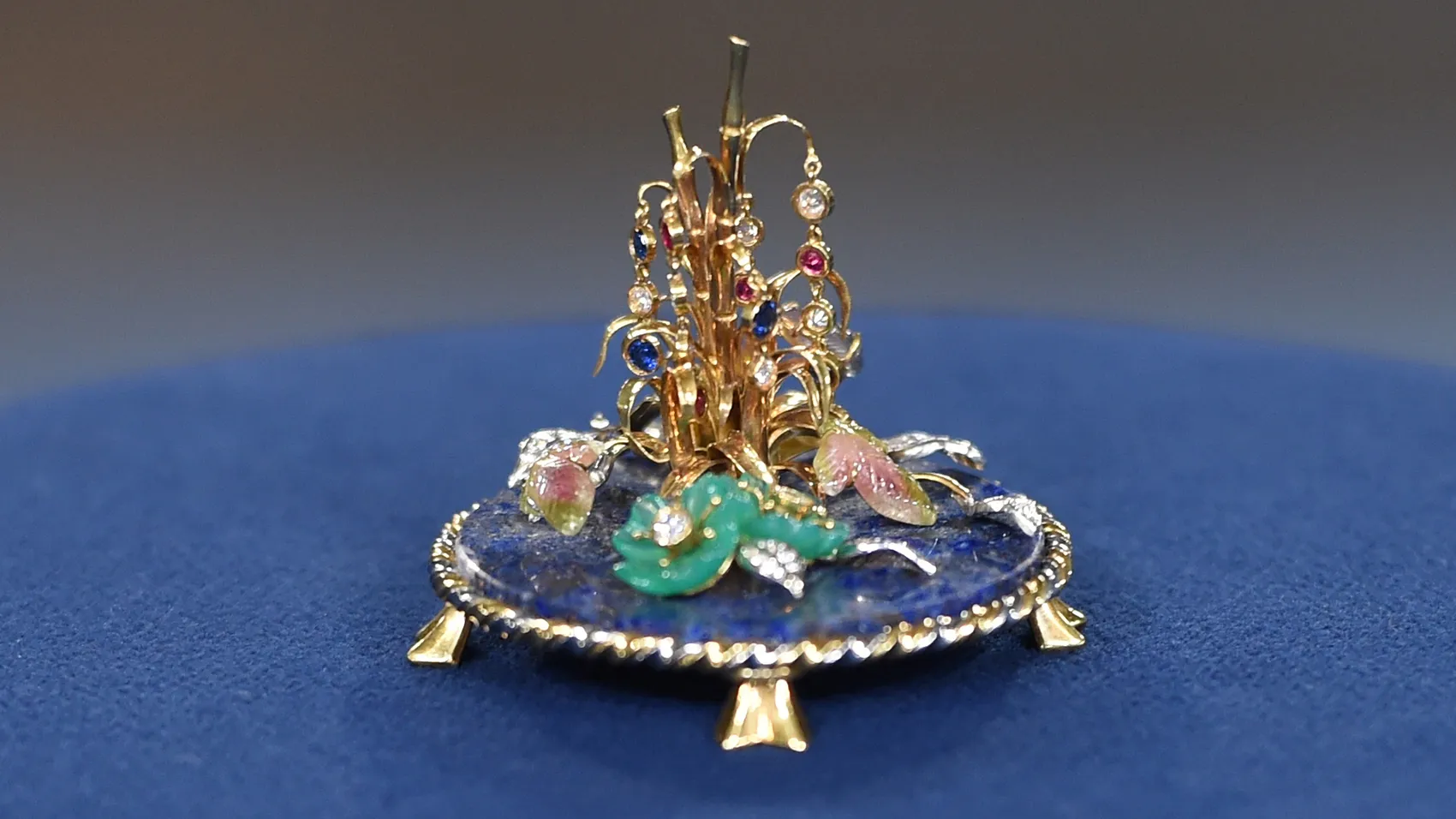GUEST: I know that it has belonged to my grandmother, but I don't know where she got it from. Her family was Danish, but I don't know if it's Danish or it could be from any place in Europe as far as I'm concerned. I inherited it from my mother, who had gotten it from her mother.
APPRAISER: I see, so it's been passed down generationally.
GUEST: Yes.
APPRAISER: Well, it's a very interesting piece, it's also a very large piece. Stylistically, we refer to this as Renaissance revival, and we call it that because many of the design articles here-- the small little cherubs, the knight at the top, the combination of enamel work, the pearls-- they're all taking visual and design clues from Renaissance paintings and the jewelry in the Renaissance paintings. Now, this piece was made in the mid to late 19th century, and it would have come from Europe. Although there are no hallmarks, I suspect that the piece is probably from Austria, or what we call Austro-Hungaria.
GUEST: Uh-huh, yeah.
APPRAISER: Which is known for this type of Renaissance revival work. And as Renaissance revival work is concerned, this is actually a very nice example. You've got a combination of silver and gold, but the real star is its centerpiece. This is a carved cameo, and it's carved out of stone, and stone obviously is much harder than the shell, which is a typical material for cameos. So this was really quite an exceptionally talented carver. The subject matter here is Hercules wrestling the lion. Now, as I mentioned, this piece is from the mid to late 19th century. The cameo itself, though, is late 17th to early 18th century and most likely Italian.
GUEST: Oh.
APPRAISER: There was a real tradition in the 1860s, 1870s, 1880s to go use what were probably at the time considered ancient cameos-- even though this was not ancient, it was probably thought of as being ancient-- and remounting them into pieces of jewelry at this period. The pearls are natural, the red stones here, these are rubies, and multi-colored enamel. It's really quite a unique piece, and I would say a piece like this at auction could bring anywhere between $10,000 to $15,000.
GUEST: Oh, my goodness. Yeah, I had no idea. No idea at all.

